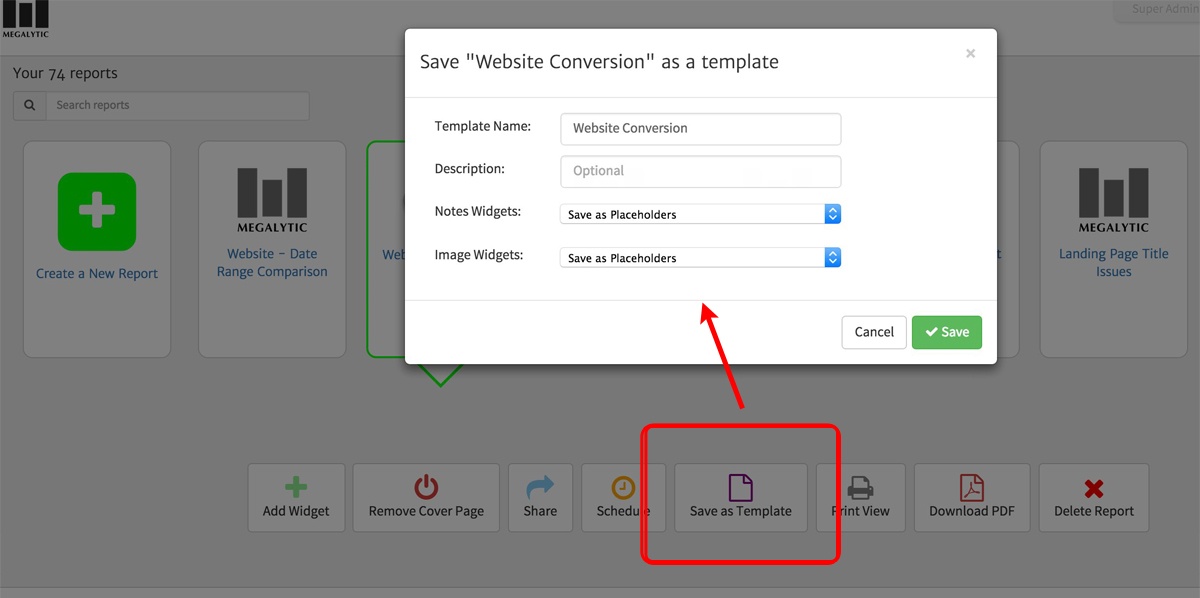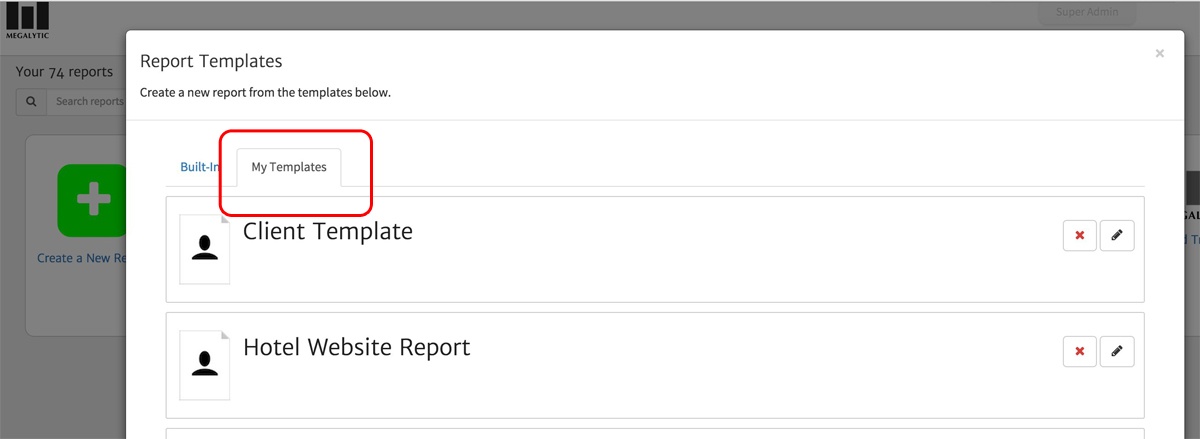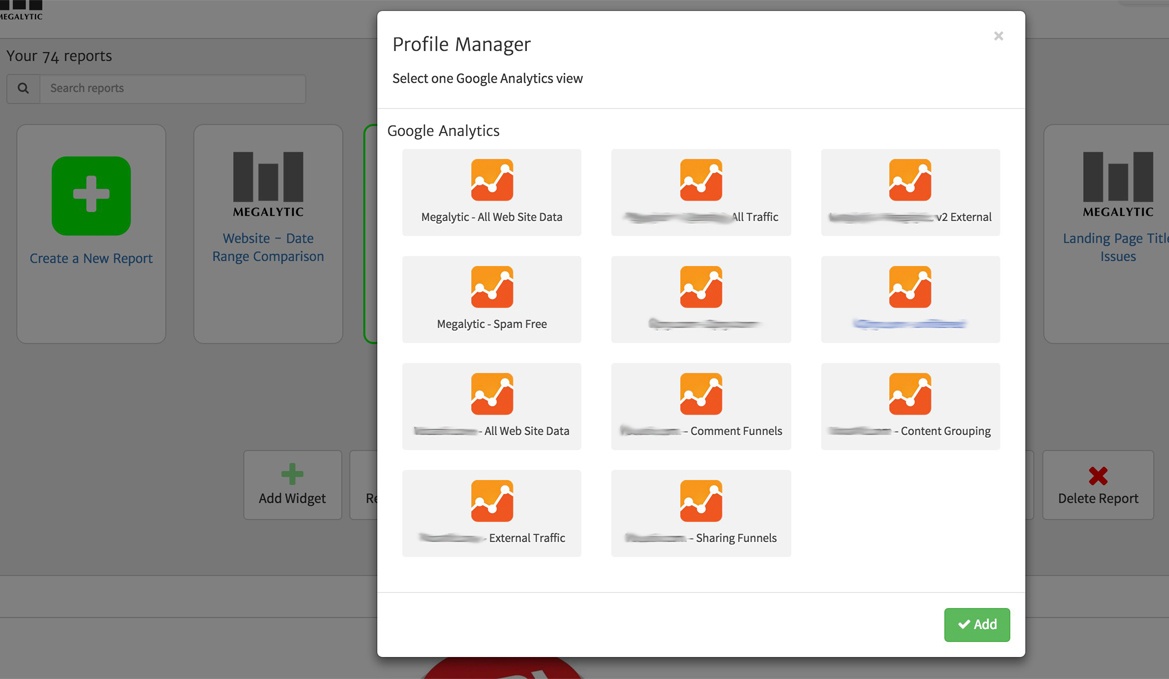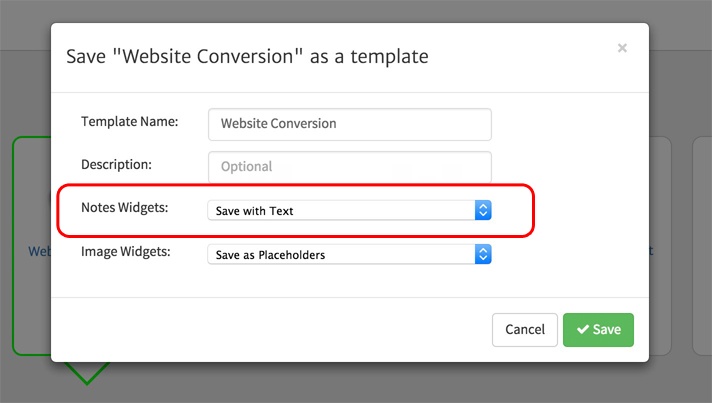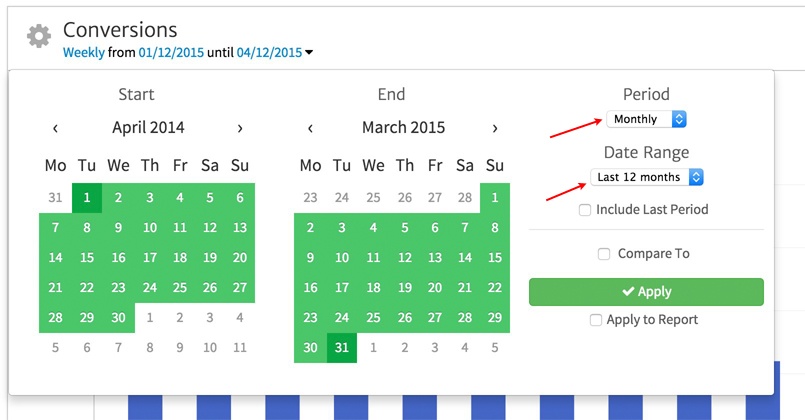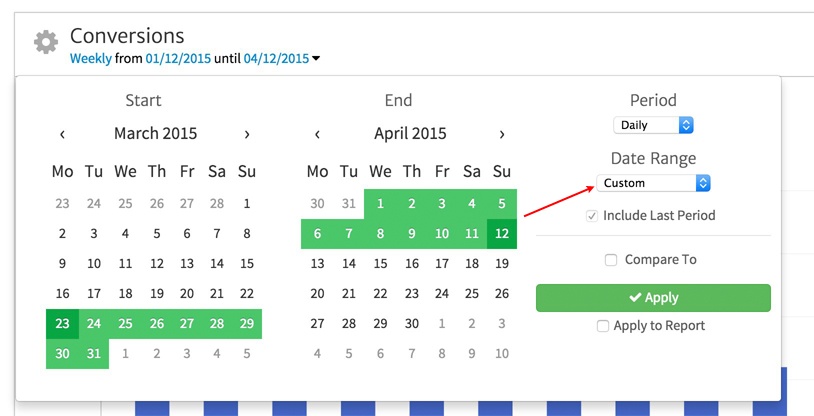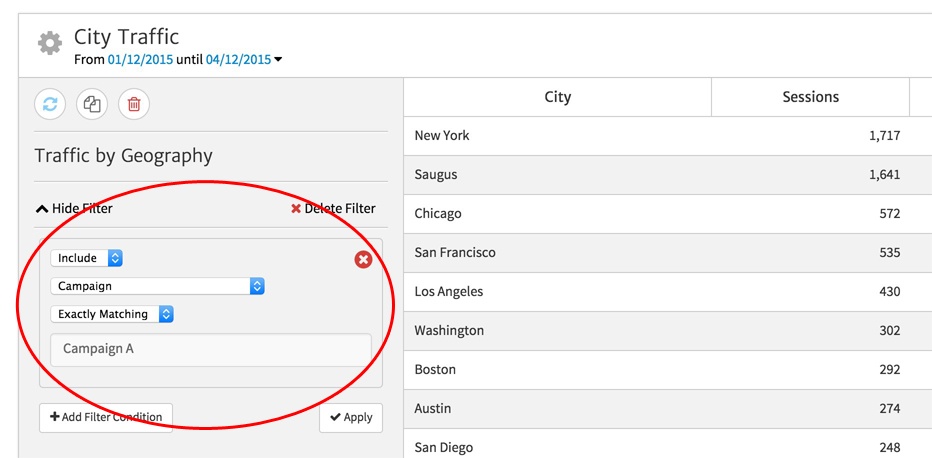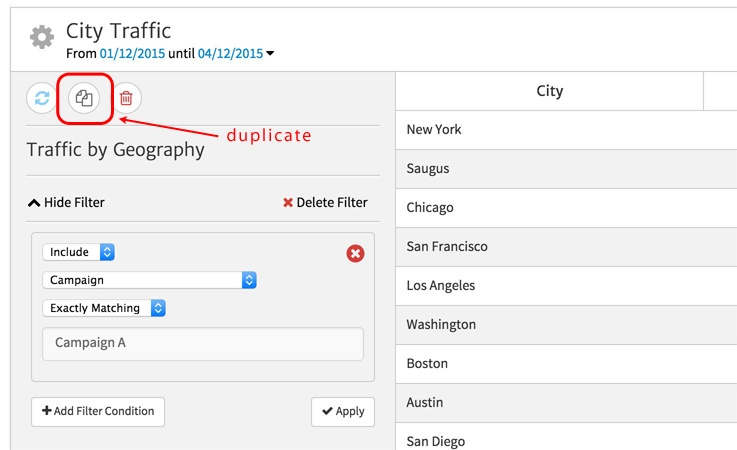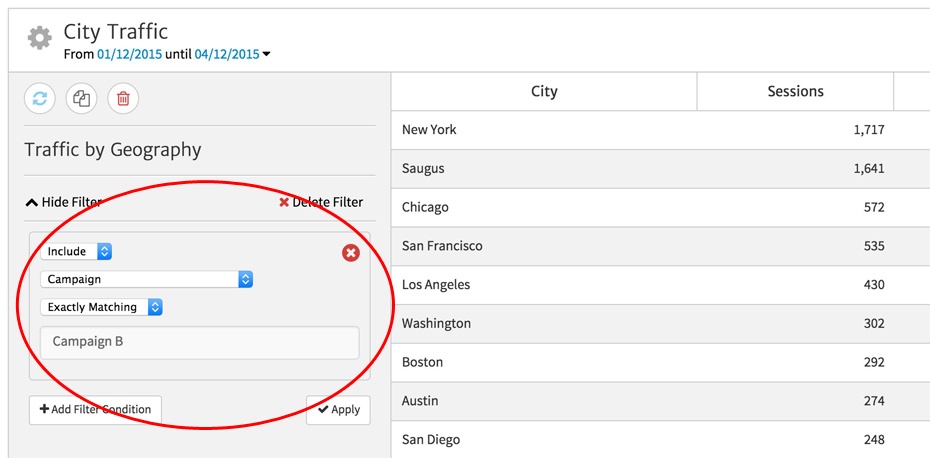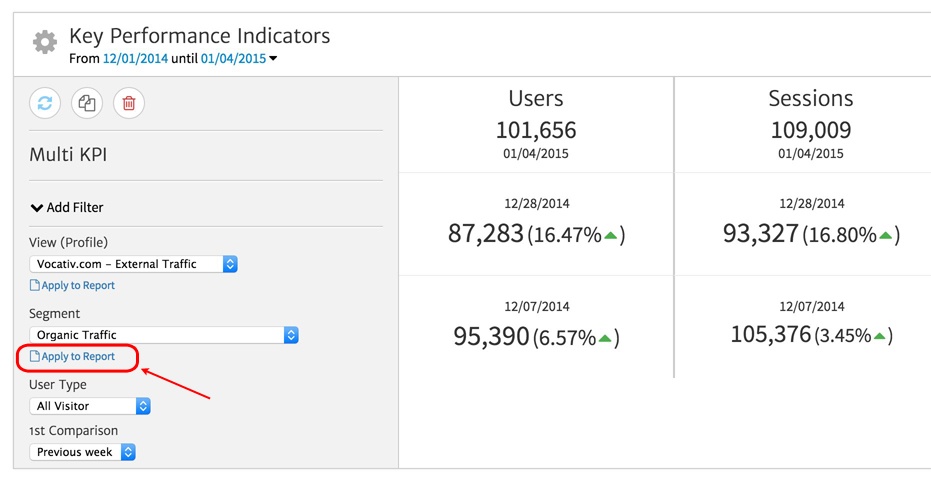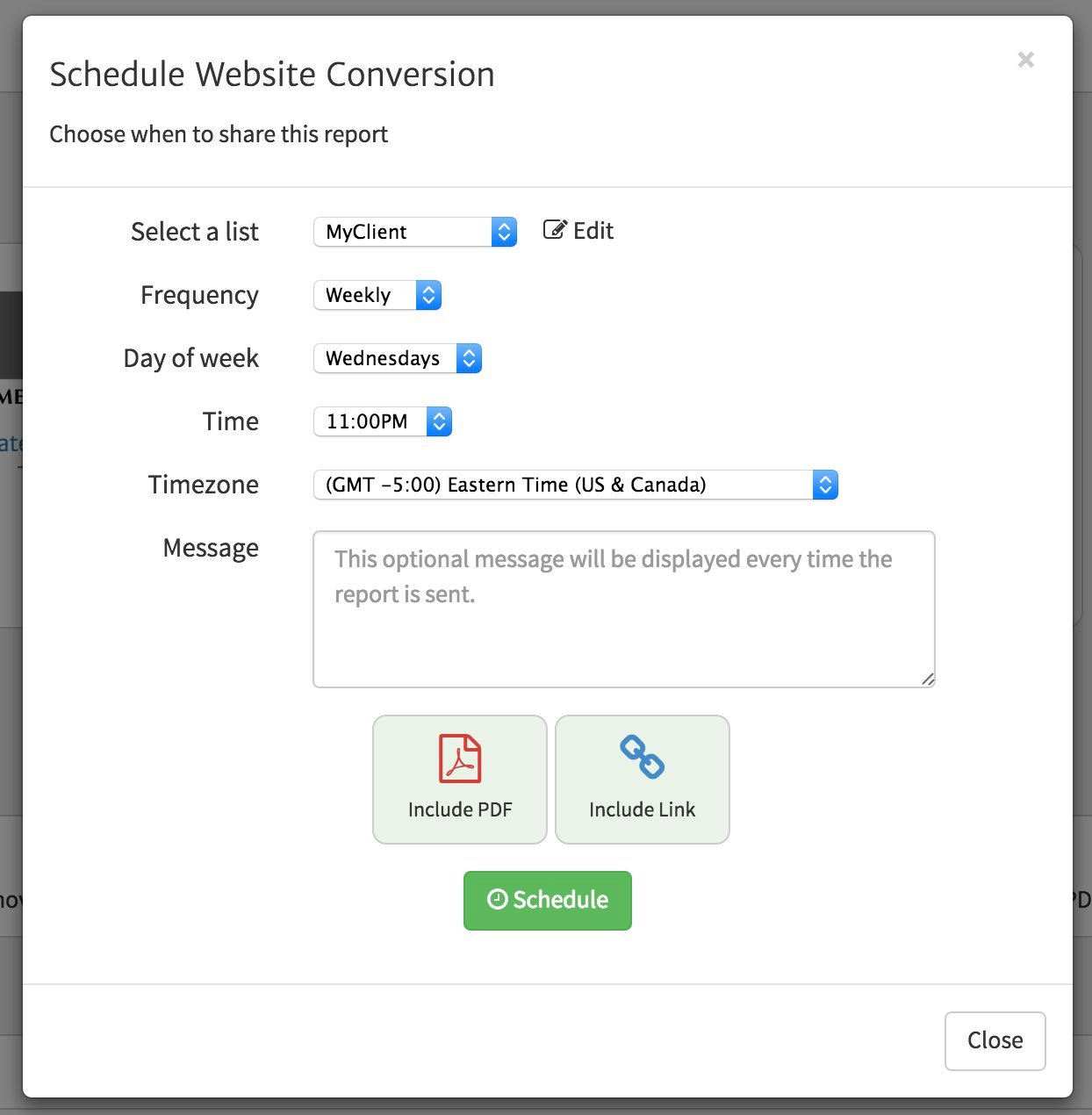
Report Templates
A key time-saving feature in Megalytic is Report Templates. Any report that you have created in Megalytic can be saved as a template, allowing you to recreate that report on the fly with different data. Why is this so useful?
Let’s say you work for a digital marketing agency responsible for large-scale reporting. You defined a standard report that you want to send to each of your 40 clients once per month. With Megalytic, you can create the standard report once, save it, and then use it as a template to populate the other 39 reports. Setting up the first report may take a little time, but after that, you’ll be able to quickly generate the other 39 using the template.
Here are a few images to show how it works.
As shown above, when you have created a report that you want to use as a template, simply select the “Save as Template” icon and give your template a name.
To use the template you just created, click “Create a New Report,” select “My Templates” and then scroll down the list to select your saved template.
After you have selected your template, Megalytic prompts you to select the data source that you want to use. The selections come from the list of connections in your Megalytic account. If your client’s data is not listed, you may need to create a new connection for it.
Megalytic will use the data source that you selected to populate the charts and tables in the report with data. The template creates a copy of the original report, but with data from whichever connection you select.
Save Boilerplate Text in Templates
Another way templates give you back time is through the ability to add and save boilerplate text that is copied over into any report you create from the template. For example, suppose that at the top of your standard report, you always have a chart showing weekly sessions over the last three months. Underneath this chart, you might have text like this:
The chart above shows the weekly traffic (Sessions) to your website over the last three months. As you can see, traffic increased by [3,456] Sessions this week vs last week. That is a [6.7%] increase.
This type of text is the same, or very similar, in every report, with just the numbers and percentages varying. By including this text in your template, you can save the time required to input the text into the new report (and lose the risk you may forget!). When you’re creating dozens and dozens of reports each month, that time savings adds up quickly. All you have to do is remember to update the number and percentage. We put those in brackets to remind ourselves to update them.
To save boilerplate text, make sure to set the “Notes Widgets” to “Save with Text” when saving your template. This will ensure that the boilerplate text you have entered into your report will be saved as part of your template.
Rolling Date Ranges
If you do reporting at regular intervals, such as monthly, quarterly, or even weekly, Megalytic has some additional time-saving features to help keep your data up to date.
Rather than having to manually update the date ranges on your charts and tables every time, you can use rolling date ranges. Rolling date ranges automatically stay up-to-date with the current calendar date. So, for example, if you have a chart showing monthly data over the last 12 months, and you run the report in April, that chart is going to show monthly periods through March – because March is the last full month available.
Now, when May rolls around, the chart will automatically update to include the month of April, since April is now a complete month.
To select a rolling date range, open the date picker, select a Period (Daily, Weekly, Monthly, Quarterly) and then select one of the options from the Date Range menu. For example, you might select the “Monthly” period, and the “last 12 Months” rolling date range.
Make sure that the Date Range selector is set to “Last 12 months” to indicate that you are using a rolling date range. If you click on a date in the calendar, this will fix the date range and it will no longer roll forward. This condition is indicated by the Date Range selector switching to “Custom.”
Below, we show a custom 21-day date range that a user has selected. Note that the Date Range selector clearly indicates this is a “Custom” range.
Duplicate Widget Features
When you are creating or modifying a report, you will notice that you often want to create a series of widgets that are almost identical – except for one key parameter. As an example, you might want a table showing the top 10 cities visiting your site from a single campaign – call it Campaign A. In this case, you would use the “Traffic by Geography” widget and define a filter so that only traffic from Campaign A is included.
But, maybe you also ran Campaign B and Campaign C this month, and you want the same type of table for each. Instead of creating a widget from scratch for each of these campaigns, you can use the duplicate widget feature to create an exact copy of the Campaign A widget.
Then, you can simply update the filter to select Campaign B data, instead of Campaign A.
Apply to Report Feature
Sometimes you are working on a report and realize you want to make the same change to all the widgets. For example, maybe you have created a report using the Paid Search segment, and you want to update it to use the Organic search segment instead.
For this situation, Megalytic includes an “Apply to Report” feature for Segments, Goals, Dates and a few of the other parameters you can edit in the widget editor.
In this case, you can open the editor of one widget, switch the Segment from Paid to Organic, and then click on “Apply to Report” to update the Segment selector on every single widget in the report that has a segment selector.
Schedule Reports for Automatic Delivery
Once you’ve created the report, you have to send it. Rather than individually downloading each report as a PDF or generating a unique web link, let Megalytic handle it for you. Megalytic lets you save time by scheduling your reports for automatic delivery.
Clicking on the Schedule button will bring up a set of options for report schedule. You can select the frequency of delivery (daily, weekly, monthly, etc) and create an email distribution list for each report.
Conclusion
Tools like Megalytic help to make analytics reporting a lot faster – and with higher quality than “cut ‘n paste’ approaches. Try out the techniques described here and see how they help you to streamline your reporting process.
Oh, and if you have any ideas for how we can make Megalytic even faster and more convenient, let us know! We are dedicated to making high quality reporting simpler and faster. We’d love to hear your thoughts!
